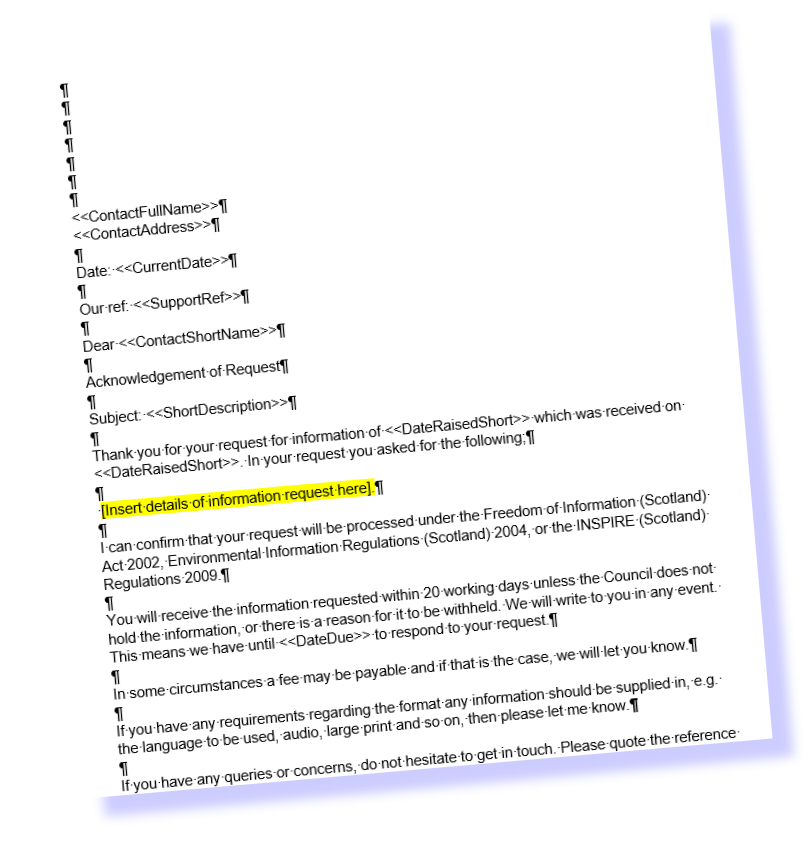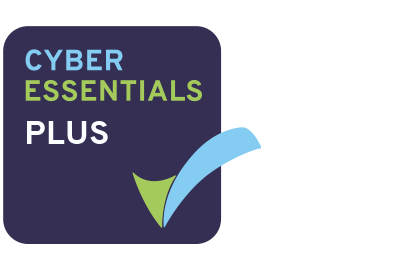Does your IRMS really need 100+ response templates? Would 20 smart templates be better for FOIs, EIRs and SARs?
In helping automate the change of contact details for the information commissioner in one country (OSIC, Scotland) last week, we noticed that we had to change many more template emails and documents than we were expecting.
There were over 100 templates in some authorities. Much productivity improvement is possible removing manual effort if we adjust them to work smarter. AXLR8 is partly to blame here. We have often encouraged existing clients share. So some errors and poor practices have cascaded. One client’s hard work in creating up-to-date templates for different types of response has been shared with their colleagues at other public sector clients.
Benefits of sharing templates
The benefit to the public purse is obvious. Imagine you have created templates or automated emails for your jurisdiction.
- acknowledgement for a SAR
- Standard proof of ID for DPA applicants
- Acknowledgement for FOI, etc.
- Clarification of your request standard template
- “information not held”
- exemptions to this request
You have done that work on the tax payer’s dollar and we all have a natural public sector sharing ethos. The IP belongs to the (public or the Crown or whoever it is in your jurisdiction). If you have created a template for all your Australian or French or English respondent communications, you would share it with relevant public service peers. Then the recipient of your creativity and diligent cross checking with “legal” can just change the name and address in a few places to their own department and maybe pass on the Karma one day.
So far so good. However, in reviewing these templates, we came across some areas for improvement. In helping (and encouraging) sharing these (best practice) documents we have allowed errors from minor typos to lazy mail merges to proliferate. Here are our four suggestions for improving the templates.
1. Rationalise
A bit of pruning may be called for.
Many organisations have added new template and not “deactivated” old ones. Users selecting a template have to scroll past them every day. At least deactivate them so they leave the list.
Let’s keep it ship shape!
2. Adding more mail merge fields
As an example. Look at this email. in the screenshot of the template below. It means the human operator cannot simply press “merge” and leave the system to attach the file to the Information Request “job bag”. They must edit the highlighted area, resave, then reattach as latest version. All this takes time.

Adding more merge fields helps make the email mor appropriate. We are happy to help as it will save time and make your business, and by extension us, look better organised.
3. Conditional mail merge fields
Sometimes people have two templates when one will do. If the acknowledgment email for a SAR is very different to an FOI request then have two templates. After all, the legal phrasing is different.
However, there are ways you can add in, for example exemptions so that they do not need a separate letter/email. If there are exemptions, they will mail merge in if there are not, they will not.
4. Remove manual edits
In the example above, an officer must do the editing. The text between the square brackets must be manually replaced. This adds even more manual stages (save, upload attach, obsolete the previously attached auto-created document, etc.).
Many fields which are used in the document template in the screenshot below are not used by many clients.
Did you know that you can also mail merge the reference number and short description into the name of the document?
This work could be eliminated if it was a mail merge field instead and there will surely be one you can use.
Review
Please do not hesitate to email Support or call us up 01344 776500 if you want to discuss any of your templates and how they could be easier to use and smarter.
